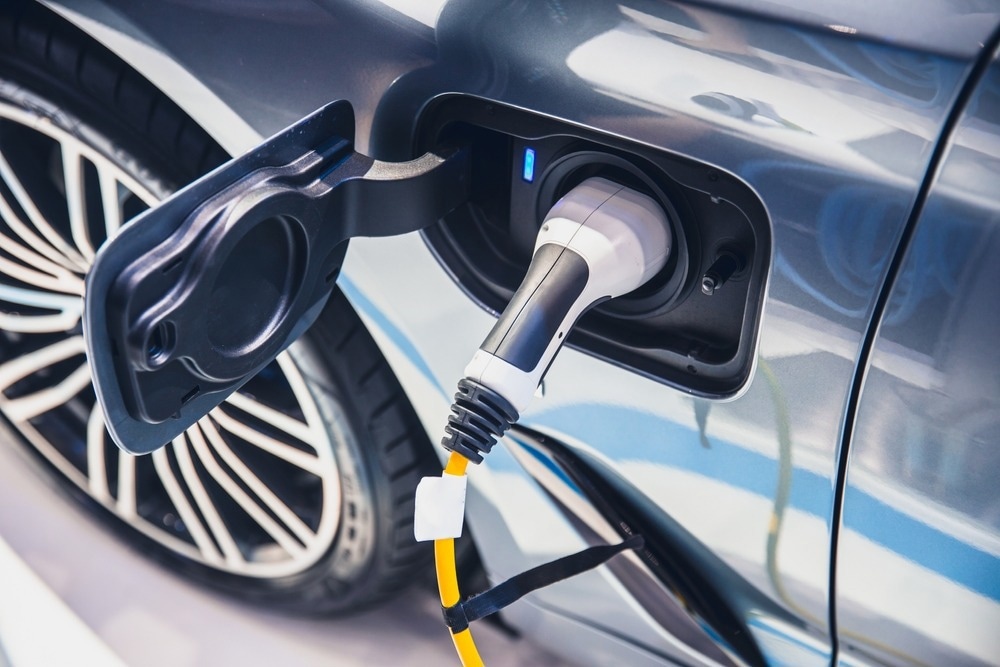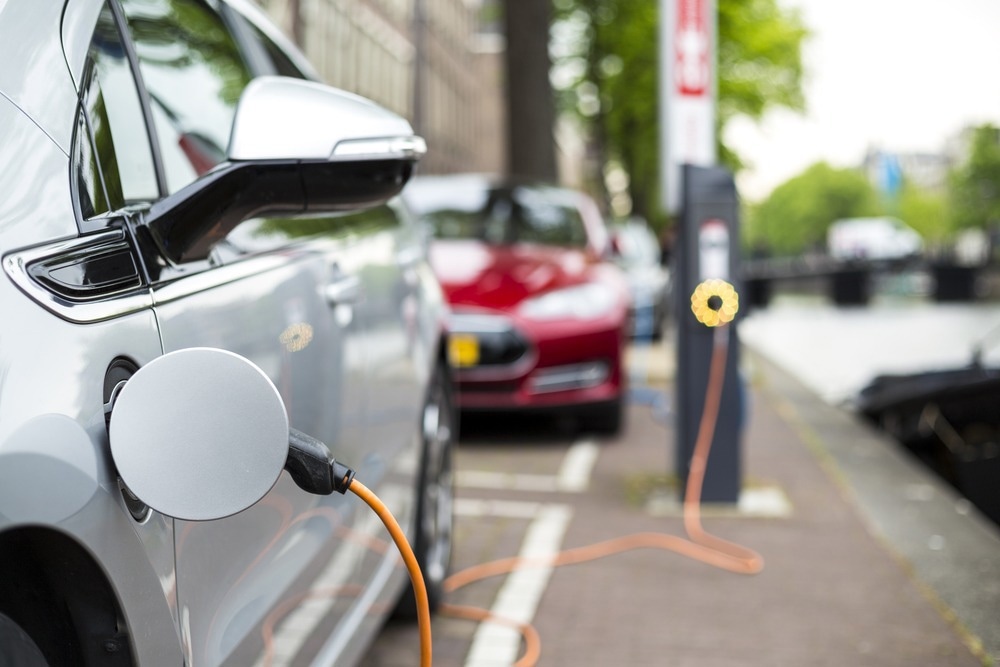Sensors are revolutionizing electric vehicles (EVs), enhancing their function, design, and performance. This article explores the critical role of sensor technology in EVs, reviewing its diverse types, applications, and the promising horizon of future innovations, paving the way for a more sustainable and efficient automotive future.

Image Credit: Quality Stock Arts/Shutterstock.com
Introduction to Sensors in Electric Vehicles
Sensors are integral to the innovation and optimization of electric vehicles (EVs). The significance of sensor technology in monitoring and optimizing the thermal conditions of EVs, particularly focusing on internal battery sensors, external battery sensors, multi-sensor fusion, traditional and positionless motor sensors, and air conditioning system sensors, has been well documented.1
These sensors are instrumental in the real-time monitoring of batteries, motors, and air conditioning modules, which are critical for the performance and longevity of EVs. For instance, temperature, pressure, current, and voltage sensors within the battery module provide essential data to prevent damage due to temperature extremes.
A recent review of the various sensor technologies applied across thermal management components highlights the shift towards multi-sensor fusion for comprehensive monitoring and the challenges faced, such as the accuracy of traditional sensors and the stability of advanced sensors.1
Solutions to these challenges and future research directions emphasize the continuous innovation and expansion of sensor applications within EV thermal management systems. This highlights the integral role of sensors in advancing the efficiency, safety, and sustainability of electric vehicles, paving the way for future innovations in the field.
Role of Sensors in Electric Vehicle Performance
The performance of EVs is significantly enhanced by advanced sensor technologies, with pressure mapping playing a pivotal role in optimizing battery efficiency and vehicle safety. As detailed by Tekscan's Raul Oreste, pressure mapping systems measure the interface pressure between surfaces, such as those found in battery packs, to ensure optimal performance and longevity.2
This technology is critical in maintaining the correct pressure on battery cells to prevent issues like thermal runaway in lithium-ion batteries and cracking in solid-state batteries, which can occur due to uneven pressure distribution.
Moreover, the integration of sensors extends beyond battery optimization. For instance, in tire design, sensors provide valuable data on how tires respond to different conditions, leading to designs that can withstand the high torque of electric motors.3 This ensures durability and safety, essential attributes for EVs.
Sensors also contribute to developing smarter, more comfortable interiors, like adaptable seating and door seals, which enhance the overall driving experience. The role of sensors in EV performance is thus multifaceted, addressing everything from battery health and efficiency to passenger comfort and vehicle dynamics, indicating their indispensable role in advancing electric mobility.
Types of Sensors Used in Electric Vehicles
In the realm of EVs, a diverse array of sensor technologies is employed to enhance functionality and ensure safety. Among these, pressure mapping sensors stand out for their ability to measure interface pressures between surfaces, which is crucial for battery optimization and vehicle design.2
These sensors, made of polymer sheets with conductive layers, provide vital data on pressure distribution, aiding in preventing battery failures and optimizing stack pressure for both lithium-ion and solid-state batteries.
Further expanding the sensor landscape in EVs are temperature sensors, which monitor the battery and motor to prevent overheating, and proximity sensors, essential for advanced driver-assistance systems (ADAS) and autonomous driving features.4
Additionally, inertial sensors, including accelerometers and gyroscopes, play a critical role in vehicle stability control and navigation, enhancing the driving experience and safety. The integration of these sensors reflects the complex interplay of technologies required to advance EV performance, safety, and reliability, underscoring the multifaceted nature of sensor applications in the electric automotive industry.

Image Credit: Sopotnicki/Shutterstock.com
Applications and Benefits of Sensors in Electric Vehicles
Sensors in EVs offer many applications and benefits, significantly enhancing vehicle performance, safety, and user experience. Pressure mapping sensors, as discussed by Tekscan's Raul Oreste, are pivotal in optimizing battery design to ensure uniform pressure distribution to prevent thermal runaway and premature battery failure.2
These sensors also contribute to developing safer and more efficient vehicle structures by monitoring the pressures exerted on various components, leading to improved manufacturing processes and product quality.
Beyond battery optimization, sensors in EVs play a crucial role in additional ADAS-enabling features like autonomous driving, parking assistance, and collision avoidance, thereby increasing vehicle safety and convenience.5
Temperature sensors maintain optimal operating conditions for batteries and motors, while proximity sensors enhance navigation and parking. Integrating such sensor technologies in EVs not only boosts their performance but also significantly contributes to the overall sustainability of transportation by ensuring the longevity and reliability of these clean energy vehicles.
Future Developments and Innovations in Sensor Technology for Electric Vehicles
The future of sensor technology in EVs holds promising advancements poised to revolutionize the automotive industry further. Innovations in pressure mapping, as highlighted by Tekscan's Raul Oreste, are set to enhance battery performance and vehicle design significantly.2
Emerging sensor technologies are expected to increase sensitivity, accuracy, and durability while reducing size and cost. This includes the development of sensors with higher resolution pressure mapping capabilities to provide even more detailed insights into battery health and performance, ensuring safer and more efficient EVs.
Additionally, integrating artificial intelligence (AI) and machine learning (ML) with sensor technology will enable smarter, predictive maintenance capabilities, reducing downtime and extending the lifespan of critical components.
The evolution of sensor technology will also support the advancement of autonomous driving systems, with sensors becoming more adept at navigating complex environments, leading to safer and more reliable autonomous vehicles. As sensor technology continues to evolve, its applications in EVs will expand, driving innovations that enhance vehicle performance, safety, and sustainability.
References and Further Reading
- Cheng, A. et al., (2023). A Review of Sensor Applications in Electric Vehicle Thermal Management Systems. Energies, 16(13), 5139. doi.org/10.3390/en16135139.
- Tekscan, Inc. (2023). Improving Battery and EV Design with Pressure Mapping. [Online] AZO Sensors. Available at: https://www.azosensors.com/article.aspx?ArticleID=2857
- Pomoni, M. (2022). Exploring Smart Tires as a Tool to Assist Safe Driving and Monitor Tire–Road Friction. Vehicles, 4(3), pp. 744-765. doi.org/10.3390/vehicles4030042.
- Energy.Gov (2020). Batteries, Charging, and Electric Vehicles. [Online] Office of Energy Efficiency & Renewable Energy. Available at: https://www.energy.gov/eere/vehicles/batteries-charging-and-electric-vehicles
- Choi, C.Q. (2022). Quantum Sensors Could Quell EV Range Anxiety. [Online] IEEE Spectrum. Available at: https://spectrum.ieee.org/quantum-sensor-range-anxiety
Disclaimer: The views expressed here are those of the author expressed in their private capacity and do not necessarily represent the views of AZoM.com Limited T/A AZoNetwork the owner and operator of this website. This disclaimer forms part of the Terms and conditions of use of this website.